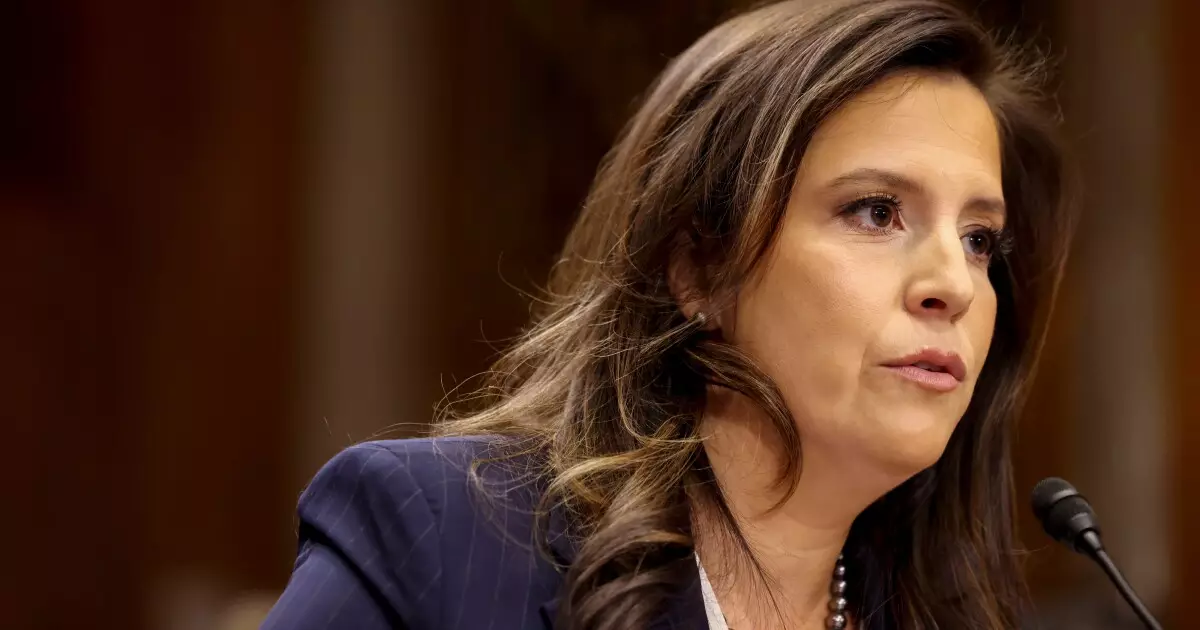In a bold move that has sent ripples across the financial and academic landscapes, Republican Representative Elise Stefanik is calling for a thorough investigation by the Securities and Exchange Commission (SEC) into Harvard University’s recent bond sale. This $750 million taxable borrowing, executed on April 9, has become a lightning rod for controversy amidst growing tensions between the prestigious institution and the Trump administration. Stefanik’s allegations center around a potential failure to disclose material information pertinent to investors, thus raising serious questions about Harvard’s transparency and ethical obligations in the competitive bond market.
Stefanik’s inquiry is not merely a political maneuver; it reflects an urgent public interest in how major educational institutions operate in the fiscal landscape, especially when entangled with governmental affairs. In her communication to SEC Chair Paul Atkins, she pointed out discrepancies between the original bond prospectus and the supplemental disclosures made later. The stark difference in risk disclosures could suggest that, by the time the bonds were offered, Harvard had already made a strategic decision to defy federal conditions for financial aid. If true, this could implicate the university in a significant violation of federal securities law by withholding material information that investors had the right to know.
Implications for Investors and Trust in Institutions
The ramifications of this situation extend beyond Harvard’s reputation—they pose a serious threat to investor confidence in the municipal bond market. Investors rely heavily on accurate and timely information to make educated decisions about their financial commitments. The allegation that Harvard may have knowingly deprived investors of crucial insights into its potential conflicts with federal authorities significantly undermines this trust.
Jeff Timlin, a managing partner specializing in municipal strategies, has emphasized the importance of transparency, asserting that if there are “smokes” of impropriety, they should certainly be investigated. This sentiment resonates strongly within the investment community, where the potential for reputational damage can have drastic and far-reaching financial implications. If Harvard is indeed found guilty of such omission, it could lead to a significant recalibration of risk assessment protocols across the sector.
Furthermore, it’s interesting to observe the dynamics at play. Harvard, typically regarded as a bastion of integrity and high academic standards, now stands accused of manipulation in financial practices. The school’s bond ratings from credible agencies like Moody’s and S&P may soon be scrutinized under new levels of skepticism if allegations continue to surface.
Endowment Investments: A Cause for Concern
Stefanik’s investigation request opens another front of concern regarding Harvard’s sprawling $53 billion endowment. The congresswoman has warned that a substantial part of this endowment is tied up in illiquid assets, which she argues may be overvalued amidst changing economic conditions. Given the current era marked by elevated interest rates and fluctuating private market valuations, the integrity of Harvard’s financial assurances could be thrown into doubt if her assertions hold any water.
Harvard’s image as a financial powerhouse may collapse under scrutiny, revealing a more vulnerable structure than previously portrayed. The high-risk nature of leveraged investments may exacerbate potential losses during economic downturns, leading one to question whether the institution has been forthright with its stakeholders about the health of its portfolio. This situation illustrates a troubling trend in higher education financing, wherein institutions prioritize aggressive asset management strategies over transparent reporting practices, ultimately risking institutional credibility.
The Broader Political Landscape
This unfolding drama underscores a broader political narrative where the schools are often seen as gatekeepers of elite liberalism while facing backlash from conservative factions. The conflict with the Trump administration has painted Harvard as an adversarial figure in a power struggle that extends into discussions about funding and institutional autonomy. Stefanik’s criticisms can be viewed as political fuel to champion a narrative that prioritizes fiscal accountability, especially in the face of perceived elitism.
While proponents of Harvard may argue the importance of academic independence, Stefanik’s call for accountability highlights a growing demand from constituents for transparency from revered institutions, emphasizing that they are not above scrutiny. If schools like Harvard wish to maintain their status as leaders in education and governance, they must strive for transparency along with financial prudence—qualities fundamental to the regenerative trust needed in America’s civic landscape.
As this investigation unfolds, one must consider how it will influence Harvard’s standing, investor relationships, and the very essence of what it means to operate ethically within the sphere of public trust. The stakes have never been higher.


Leave a Reply